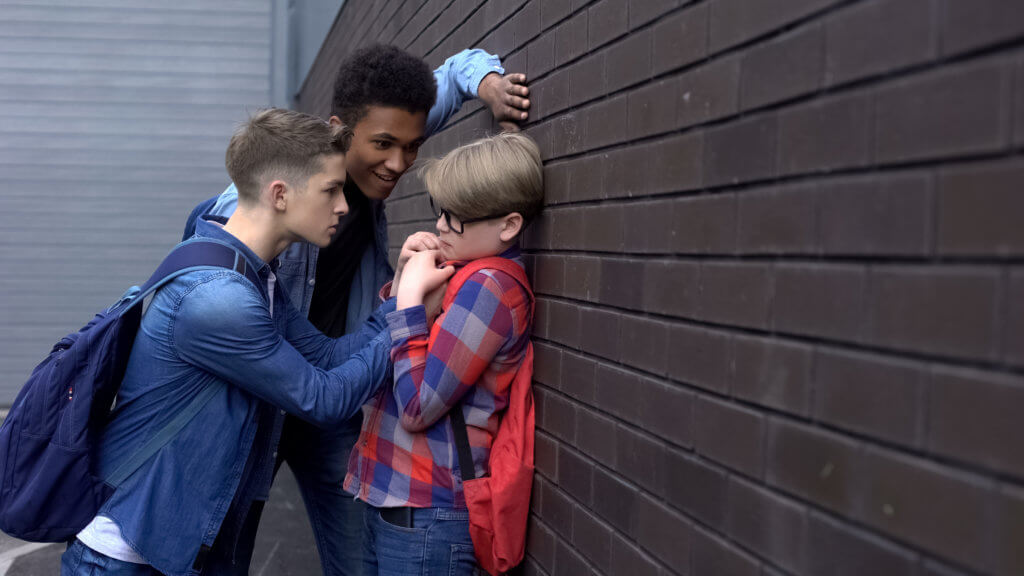SYDNEY, Australia — Words may not break bones, but they can still inflict serious damage and scarring on a psychological level. New research conducted by a team at the University of Technology Sydney is revealing just how traumatic homophobic name-calling can be among teenagers – regardless of whether the words come from rivals, strangers, or friends.
Study co-author Dr. Kai Lin, a sociologist and criminologist at UTS, explains that this works disputes the common belief among many that homophobic name-calling, particularly “teasing” among friends, is relatively harmless.
“Those who experienced homophobic name-calling, regardless of intention, reported a range of negative psychological and behavioral outcomes,” Dr. Lin says in a university release. “These included depressive symptoms and a decreased sense of belonging at school.”
Over 44 percent of teens in the study reported being called names including “homo” or “gay” over the prior month. Roughly 17 percent of that homophobic name-calling came from a “friend,” and while such scenarios weren’t as damaging as from a rival or stranger, those words still had an impact on mental health. Data used in this project was taken from a large sample of students in 36 midwestern middle schools in the United States.
“We found that the mental health impact of homophobic name-calling was stronger for girls than for boys. This suggests that while homophobic name-calling may be more common among boys, girls may be more vulnerable to this type of victimization,” Dr. Lin explains.
“Boys who are seen as ‘unmasculine’, regardless of their sexual orientation, were more often the target of homophobic name-calling. We also found adverse mental health impacts were more pronounced among racial and ethnic minorities,” the researcher continues.

This work confirms earlier studies focusing on the potent and enduring impact of homophobic bullying on mental health, including increased risk of anxiety, depression, and suicide. Moreover, this latest study highlights the fine line between bullying and teasing.
All in all, this project holds major implications when it comes to bullying prevention and intervention practice and policymaking. More concisely, the research offers three key policy and practice recommendations:
- “First, at the school and school-district level, anti-bullying policies that provide clear definitions and examples of homophobic bullying and specify that these behaviors are not accepted, are strongly recommended, along with clear procedures for dealing with such behaviors.”
- “Second, at the classroom level, teachers should be educated on the detriments of homophobic name-calling and be trained to carry out timely interventions (including referrals to counseling and communicating with parents) as per school policies.”
- “Finally, regarding rehabilitation, supportive interventions involving communication are preferred over punitive measures such as suspension and expulsion. Tolerance and inclusion education, along with mental health counseling, should be the main focus.”
Dr. Lin and Associate Professor Philip Birch, who is also a criminologist at UTS, are now working with quantitative data provided by a longitudinal study managed by the Australian Institute of Family Studies called “Tend to Men” that focuses on boys’ and men’s development. Topics covered include violence, sexual orientation development, and bullying.
Dr Lin. warns that leaving the socialization of youth primarily to social media platforms may exacerbate homophobic bullying and antisocial behaviors. As such, study authors emphasize the need for educators to develop strategies that encourage prosocial behaviors.
“These findings are relevant for all educators and policymakers looking at bullying prevention and intervention during adolescence, which is a critical developmental stage where gender socialization takes place and interpersonal skills are developed.”
The study is published in the Journal of School Violence.


One thing i noticed is that when society removed childhood bullies, societal morals went into the toilet. Who knew the little monsters actually had a necessary purpose, which was to discourage unacceptable behaviors? Boys stopped learning how to be men by standing up for themselves and others. and now everyone expects Big Brother to take care of them.